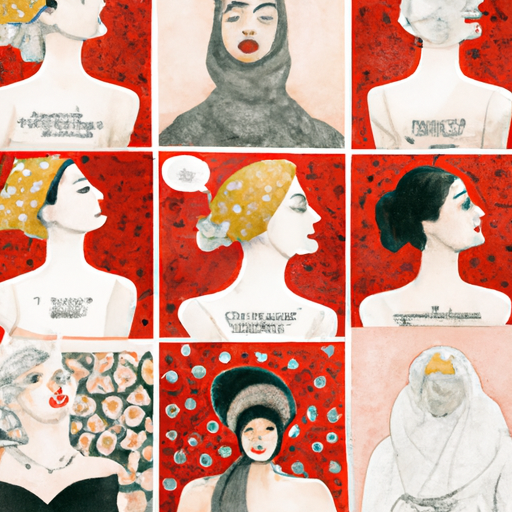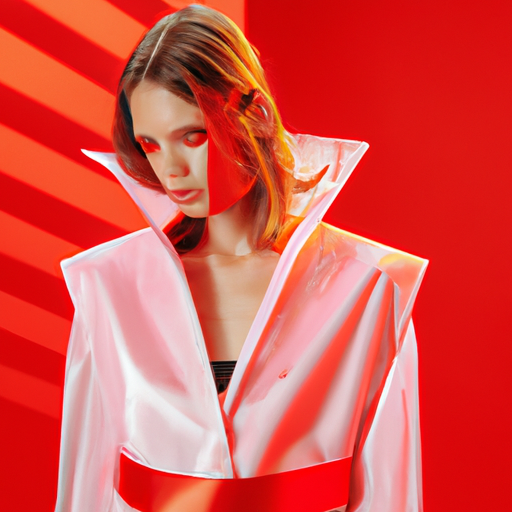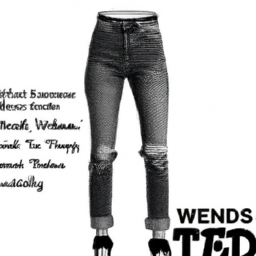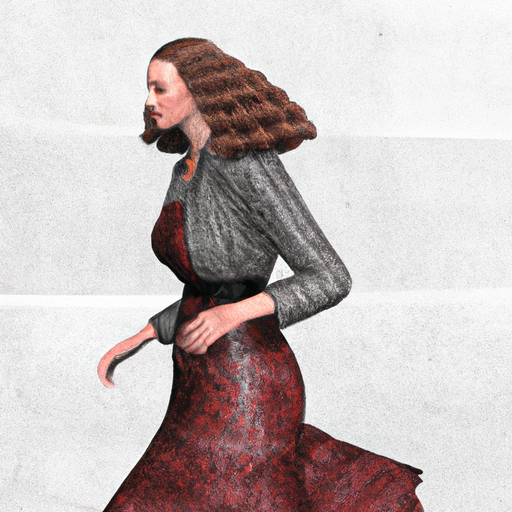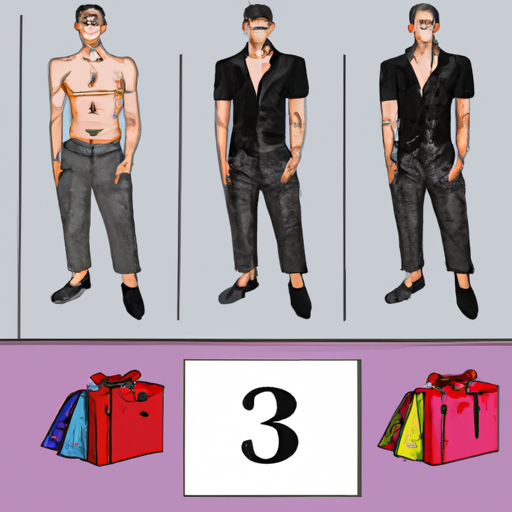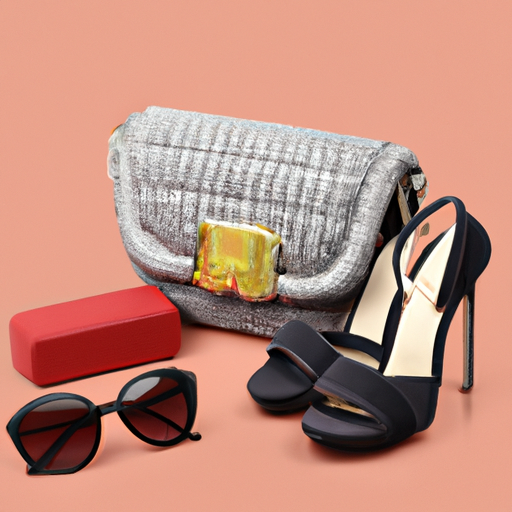What Do These Fashion Trends Reveal About The Changing Role Of Women In The Early 20th Century?
In the early 20th century, fashion trends held more significance than just looking stylish. They were a reflection of the changing role of women in society. These fashion choices spoke volumes about the newfound independence, liberation, and shifting priorities of women during that time. From the corset-free silhouettes that symbolized the desire for freedom to the rise of practical and functional clothing, fashion became a powerful tool for women to express their evolving identity and challenge societal norms. By examining these fashion trends, we can gain valuable insight into the transformation of women’s roles in the early 20th century.
Table of Contents
1. Introduction
In the early 20th century, the role of women in society underwent significant changes and challenges. Women fought for their rights, including the right to vote and the right to independently participate in the workforce. These societal shifts were reflected in the fashion trends of the time, which not only symbolized women’s changing roles but also provided them with a means of self-expression and empowerment. This article explores the fashion trends of the early 20th century and the insights they offer into the evolving role of women.
1.1 Context of the early 20th century
The early 20th century was a period of immense transformation and turbulence. World War I had brought about significant changes, and women found themselves playing a more active role in society due to the absence of men drafted into the war. Additionally, the suffrage movement was gaining momentum, as women fought for the right to vote and be recognized as equals. All these factors created a backdrop against which fashion trends emerged as a powerful platform for women to assert themselves and challenge societal norms.
2. Suffragette Style
2.1 Bold colors and militant symbolism
Suffragette style became a bold and visual representation of the women’s suffrage movement. Wearing colors like purple, green, and white, which represented loyalty, hope, and purity respectively, suffragettes used fashion to identify themselves and express their political beliefs. They wore sashes, ribbons, and badges adorned with messages such as “Votes for Women” and “Deeds Not Words.” By incorporating these symbols into their clothing, suffragettes made a clear statement about their commitment to achieving equality.
2.2 Practicality and freedom of movement
Suffragettes also emphasized practicality and freedom of movement in their fashion choices. They embraced looser, more comfortable clothing that allowed them to engage in physical activities like protesting and campaigning. Instead of the restrictive corsets of previous eras, suffragettes opted for more relaxed silhouettes and functional garments like trousers and bloomers. This shift in fashion reflected the suffragettes’ determination to break free from societal constraints and embrace a more active and independent lifestyle.
3. Flapper Fashion
3.1 Shorter hemlines and revealing clothing
Flapper fashion emerged in the 1920s and represented a dramatic departure from the previous decade’s trends. Hemlines rose significantly, with dresses and skirts becoming shorter in length, often reaching just above the knee. This shift in hemlines not only allowed for greater freedom of movement but also challenged traditional notions of modesty. Furthermore, flapper fashion embraced revealing clothing, such as low-cut necklines and sleeveless dresses, which reflected the women’s newfound liberation and willingness to push boundaries.
3.2 Jazz Age influences
The flapper fashion of the 1920s was heavily influenced by the Jazz Age, a period characterized by exuberance, rebellion, and a celebration of modernity. The energetic rhythms of jazz music and the vibrant atmosphere of speakeasies inspired the flapper fashion trends. Fringed dresses, embellished headbands, and feather boas became synonymous with the flapper style and symbolized the freedom and joie de vivre that characterized the era. Flappers embraced a carefree and unconventional lifestyle, and their fashion choices reflected their desire to break free from societal constraints.
3.3 Assertion of independence
Flapper fashion also represented a powerful assertion of independence by women. The sleek silhouette, with its dropped waistline, was a departure from the restrictive corsets of previous eras and allowed women to move freely. Bobbed haircuts, which were considered daring and unconventional at the time, became popular among flappers and were seen as a rejection of traditional femininity. By embracing these unconventional fashion choices, flappers challenged societal norms and established a new image of the modern woman.
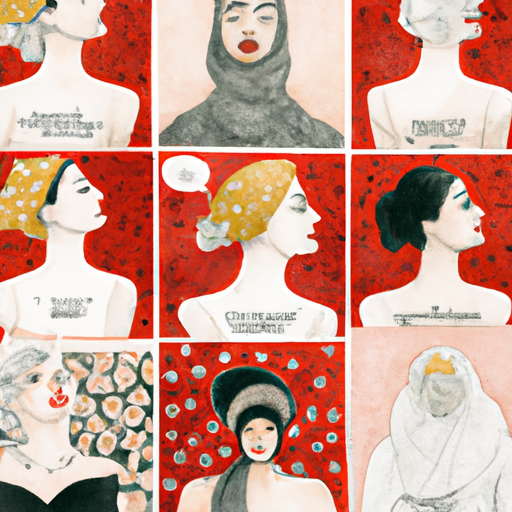
4. Gibson Girl
4.1 Feminine ideal of beauty
At the turn of the 20th century, the Gibson Girl emerged as the embodiment of the feminine ideal of beauty. Created by illustrator Charles Dana Gibson, the Gibson Girl was depicted as confident, self-assured, and poised. Her fashion choices reflected the Edwardian era’s emphasis on elegance and refinement. The Gibson Girl wore high-necked blouses, long skirts, corseted waists, and large-brimmed hats, all of which contributed to a refined and polished appearance. This fashion trend reinforced traditional notions of femininity and portrayed women as delicate and refined beings.
4.2 Focus on elegance and sophistication
Gibson Girl fashion emphasized elegance and sophistication. The clothing of this era was meticulously tailored and made from luxurious fabrics such as silk and lace. Elaborate details like ruffles, flounces, and lace trims added to the overall feminine aesthetic. The Gibson Girl’s fashion choices reflected the social climate of the time, where women were expected to embody grace and poise. The attention to detail and focus on elegance in Gibson Girl fashion exemplified the desire to present oneself as a sophisticated and refined woman.
4.3 Representing women’s changing lifestyles
Although the Gibson Girl fashion may seem restrictive compared to later trends, it represented a significant shift in women’s lifestyles. The Gibson Girl was depicted engaging in activities such as sports, bicycling, and attending social events, demonstrating that women were becoming more active participants in society. The fashion of the era allowed women to partake in these activities while still adhering to societal expectations of femininity. It symbolized the changing roles of women as they began to venture beyond the domestic sphere and assert their presence in public life.
5. New Woman Image
5.1 Incorporation of masculine elements
The New Woman image of the early 20th century brought forth a fashion trend that incorporated masculine elements into women’s clothing. In an era when women were seeking greater independence and equal rights, fashion became a means of challenging gender norms. Women began wearing tailored suits, pants, and collared shirts, traditionally considered male attire. This incorporation of masculine elements highlighted women’s desire for equality and blurred the lines between traditional gender roles.
5.2 Influence of the Industrial Revolution
The New Woman image and its fashion were influenced by the Industrial Revolution and the changing social and economic landscape it brought. As women increasingly entered the workforce and took on non-traditional roles, their clothing needed to reflect practicality and adaptability. The influence of the Industrial Revolution brought about the rise of functional clothing made from durable materials such as cotton and wool. Women’s fashion embraced tailored pieces that allowed for ease of movement, reflecting their newfound presence in the professional sphere.
5.3 Embracing athleticism and practicality
The New Woman image also led to a greater emphasis on athleticism and practicality in fashion. Women began participating in sports and physical activities as a way of asserting their independence and breaking free from societal confines. This change was reflected in their fashion choices, with sportswear and activewear becoming popular. Garments like knickerbockers, bloomers, and tennis dresses allowed women to engage in physical activities comfortably and confidently. This shift in fashion symbolized women’s increasing autonomy and their rejection of restrictive and impractical clothing.
6. World War I Fashion
6.1 Utilitarian clothing
During World War I, the fashion landscape underwent significant changes due to practical considerations imposed by the war. With men serving at the front lines, women stepped in to fill essential roles in factories and other industries. This shift led to the rise of utilitarian clothing, designed to accommodate the physical demands of these new roles. Women wore practical garments like coveralls and pantsuits, replacing the more cumbersome dresses and skirts. The functionality of this new fashion trend reflected women’s contributions to the war effort and their ability to adapt to new circumstances.
6.2 Women entering the workforce
World War I brought about a dramatic increase in the number of women entering the workforce. With their husbands, fathers, and brothers away at war, women were called upon to take on jobs traditionally held by men. This change had a profound impact on fashion, as practicality and utility became more important than ever. The clothing women wore needed to facilitate their ability to work efficiently and effectively. The fashion trends of this era reflected the changing role of women as they embraced their newfound economic independence and entered previously male-dominated fields.
6.3 Shift in gender roles
The fashion trends of World War I also reflected a significant shift in gender roles. Women’s adoption of utilitarian clothing and their participation in the workforce challenged traditional gender norms. By donning practical garments associated with men, women questioned societal expectations and demonstrated their ability to perform tasks traditionally reserved for men. Furthermore, the shift in fashion implied a blurring of traditional gender distinctions, with women embracing a more assertive and active role in society.
7. Roaring Twenties
7.1 Rise of consumer culture
The Roaring Twenties marked a period of economic prosperity and the rise of consumer culture. Women gained greater purchasing power and began to exercise their agency in shaping fashion trends. The widespread availability of ready-to-wear garments and the influence of mass media allowed women to stay updated with the latest styles. This newfound freedom in fashion represented a desire to break away from the constraints of the past and embrace a more individualistic and self-expressive approach to clothing.
7.2 Expression of rebellion and liberation
The fashion of the Roaring Twenties was characterized by a sense of rebellion and liberation. Women used clothing as a medium to challenge traditional notions of femininity and express their newfound freedom. The iconic flapper style, with its short hemlines, dropped waistlines, and embellishments, became synonymous with the era. Flappers rejected the modesty of previous eras, opting instead for bold and daring fashion choices that reflected their desire for self-expression and liberation from societal expectations.
7.3 Impact on women’s societal roles
The fashion trends of the Roaring Twenties had a profound impact on women’s societal roles. By embracing more daring and unconventional styles, women were able to assert their independence and challenge established gender norms. The flapper fashion symbolized the changing perception of women as bold, confident, and unafraid to challenge societal conventions. Furthermore, the emergence of fashion as a form of self-expression allowed women to shape their own identities and break free from the constraints of traditional gender roles.
8. Art Deco Influence
8.1 Embracing modernity and innovation
The Art Deco movement, which flourished in the early 20th century, brought forth a fashion trend that embraced modernity and innovation. Art Deco influenced various aspects of design, including architecture, art, and fashion. Its geometric patterns, clean lines, and bold colors became prominent features in clothing styles. Art Deco fashion reflected women’s desire to embrace the modern world and move away from the traditional and ornate aesthetics of previous eras. The incorporation of Art Deco elements into fashion symbolized women’s willingness to embrace change and break away from the past.
8.2 Reflection of women’s changing roles
Art Deco fashion also reflected the changing roles of women in society. As women gained more agency and independence, their fashion choices became bolder and more individualistic. The geometric patterns and clean lines of Art Deco clothing highlighted women’s desire to break free from traditional gender norms and establish their own identities. The confidence and assertiveness reflected in Art Deco fashion represented women’s growing empowerment and their refusal to conform to societal expectations.
8.3 Symbolizing female empowerment
Art Deco fashion symbolized female empowerment in several ways. The bold and geometric designs reinforced women’s desire to be seen and heard. The use of vibrant colors and innovative materials added a sense of dynamism and energy to clothing, mirroring the spirit of the era. Art Deco fashion allowed women to make a statement and assert their presence in a male-dominated world. By embracing this style, women expressed their confidence, sophistication, and determination to break free from conventional norms.
9. Fashion as a Statement
9.1 Dressing for social causes
Fashion has often been used as a means of making social and political statements, and the early 20th century was no exception. Women embraced fashion as a powerful tool to advocate for their rights and promote social causes. Suffragettes used their clothing to visually represent their commitment to securing the right to vote. Similarly, the flapper fashion of the 1920s was a rebellion against traditional gender roles and a reflection of women’s desire for liberation. By utilizing fashion to make these statements, women were able to contribute to societal change and challenge the status quo.
9.2 Challenging societal norms
Fashion trends of the early 20th century challenged societal norms and paved the way for greater equality and acceptance. By embracing new styles and rejecting traditional constraints, women asserted their independence and challenged societal expectations. The incorporation of masculine elements into women’s clothing, the adoption of revealing flapper fashion, and the promotion of utilitarian attire during wartime all challenged established gender norms and allowed women to express their individuality. These fashion choices symbolized the desire for a more inclusive and egalitarian society.
9.3 Reflecting women’s changing aspirations
The fashion trends of the early 20th century reflected women’s changing aspirations and desires. Women sought to break free from the confines of traditional gender roles and assert their individuality. Fashion became a means of self-expression, allowing women to shape their own identities and challenge societal expectations. Whether through suffragette style, flapper fashion, or the adoption of practical clothing during wartime, women used fashion to communicate their aspirations for equality, independence, and self-determination.
10. Conclusion
The fashion trends of the early 20th century served as powerful indicators of the changing role of women in society. From the suffragette style symbolizing the fight for equality, to the flapper fashion representing liberation and rebellion, each trend reflected the evolving aspirations and challenges faced by women. The Gibson Girl fashion emphasized elegance and sophistication while representing the changing lifestyles of women. The New Woman image broke through traditional gender norms by incorporating masculine elements, influenced by the Industrial Revolution. World War I fashion showcased women entering the workforce and challenging gender roles. The Roaring Twenties revolutionized fashion with its expression of rebellion and liberation. Art Deco fashion embraced modernity and reflected women’s changing roles. Throughout all these trends, fashion served as a statement, challenging societal norms and reflecting women’s changing aspirations. The role of women in society was undergoing significant transformation, and fashion trends of the early 20th century provided a platform for women to assert themselves, shape their identities, and challenge the status quo.
